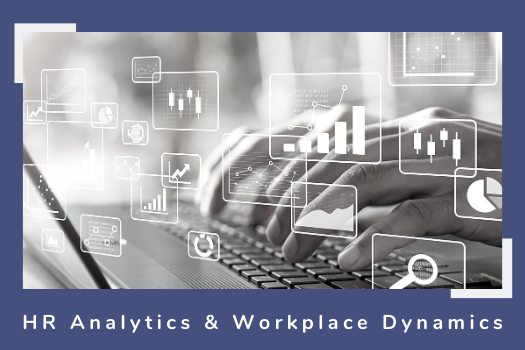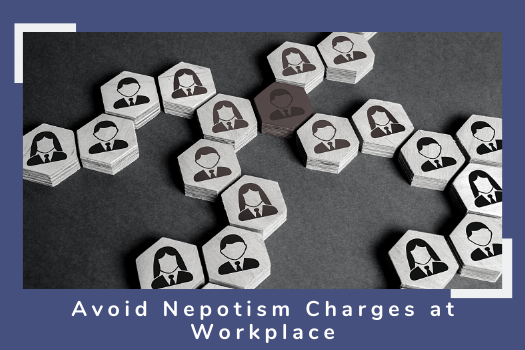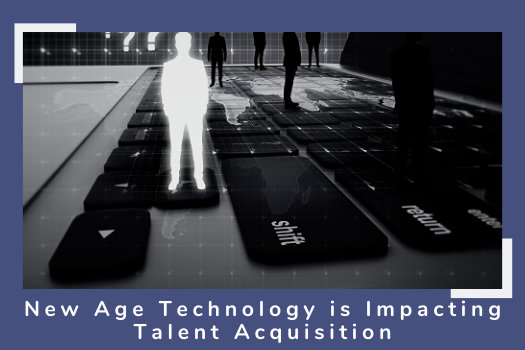How HR Analytics is changing workplace dynamics?
Employee Engagement, Employee Relations, Rewards and Recognition
In the fast-paced world, HR Analytics can play a pivotal stance in building a sturdy backbone of Human Resources of every organization. Through HR Analytics, the functionality of human resources can be better advanced. Moreover, HR metrics are also considered as people metrics or talent analytics, which can be defined as a state-of-the-art sophisticated application to mine data and keep tabs on data analytics.
Moreover, HR Analytics has become an imperative part of people’s lives to keep a quantitative gauge on money spent in an organization alongside the employee engagement programs. HR systems can also determine the quantitative effectiveness of several initiatives carried out by HR. Companies can begin to measure several parameters year and year and still have robust data.
Numerous benefits can come into being when companies begin to adopt the next-gen paradigm in terms of operation and management. HR Analytics will empower companies to effectively manage their workforce where a team of professionals can reach a business goal with insurmountable productivity. There are several challenges in this new field where HR is also tasked to identify the type of data that is required to store, capture, and process capabilities of the respective company to reach the desired goals.
In addition to this, companies can build the perfect model for predicting the return which was earlier spent on human resources.
How can Data Analytics aid a company?
Big data has wired connection with data analytics, achieving prowess in big data will enable an organization to compete with any other organization being well versed with data. Experts are of the opinion that the Big data industry has got the potential to become a 200-billion-dollar industry this year.
The prediction also suggests that companies that embrace the subtle robustness and effectiveness of data science are deemed to spend very less time alongside resources on HR management. The advancement of data mining and processing has become quite smooth; hence industry can use the data which is available abundantly across the world; however, no one uses it.
Talking about the rise in the revenue of data analytics and big data, we have seen an exponentially rising curve since 2016. In 2016 there was a $130.1 billion market for it and in 4 years, the figure stands tall at $203 billion.
As mentioned earlier, there are several ways that a company can utilize data to make profits. Check out nine different ways that make HR analytics powered by big data, a revolutionary idea.
1. In Hiring: The market is extremely crowded as now and then several companies are coming into being and this is making the competition quite stiff. Meanwhile, some of the companies are also struggling when it comes to attracting talent and raw professionals. Several surveys suggest that if HR makes a bad hiring decision, then it would cost 30% of the overall potential earning of employees.
The conventional HR management is not equipped in countering the issue as there is a lack of manpower alongside robust analysis. And this is the moment where big data would aid in making the most out of things in limited resources.
Today, companies can filter the best candidates by using cutting-edge software which has data science in its core. Companies can filter over a thousand resumes and later lay down the proper foundation for selecting promising candidates. Without Big Data, HR analytics is like living in the Stonehenge.
2. In training and evaluating: The goal is not to hire the candidates who are the best, rather the real challenge is to make sure that the candidates get into new duties. With proper guidance and professional training programs, the candidates can excel at work.
The first thing that an HR needs to ensure is that candidates must adapt the corporate procedures. Later, they must learn about all the positions alongside the software solutions which they need to use at the workplace. At the completion of this phase, it would be essential to enlist the re-learning capability as the services of businesses keeps on upgrading time after time.
HR analytics equipped with data science allows employees to learn as well as conducting both benefit and cost analytics for each of the learning courses. With HR analytics, the evaluation can be modified to make things essentially productive.
3. Employee performance: In HR analytics, the most crucial feature is the analysis of data regarding employee performance. The system allows the organization to monitor the crucial key performance indicators and at the same time, the performance can be evaluated in real-time.
HR analytics can detect the potential flaws which take place in the working atmosphere. Once the flaws are out, the valuable feedback will be used immediately in making things right in a short period.
Data science aids in retail operations in such a way that it can analyze the performance of every individual in the company. The performance will be judged minutely to get a proper report. HR managers can benefit from using the most-impressive tool in such a manner that they can carry out face-to-face communication directly with the employees and they will also get to know about the first-hand impression regarding work.
The impeccable combination of skills and experience of HR professionals and the analytical capability of Big Data will ultimately give rise to HR analytics which is the future of Human Resource management.
4. Financial compensation: The easiest way to satisfy an employee is to compensate them financially. Everyone in this world must make quite an adequate lifestyle. To make the employees happy, paying adequate salary to the employees will help them to settle down and work for an organization with sheer dedication.
Even in this sphere HR analytics is widely helpful. HR analytics incorporates advanced-level analytics which would allow any HR team to calculate the financial model seamlessly. By the looks of it, this kind of tool is extremely important for corporations with massive numbers of employees. Moreover, companies with several international branches can swiftly balance salaries at different hierarchical levels.
Big Data in HR analytics would help the management to act at the right time in increasing financial compensation. It would also aid in cutting down the costs and reduce salaries.
5. Planning: Big Data aids in advancing the operations in a much larger variant. It is the major duty of HR analytics to planning for the future of the company for better or for worse as the survival of the company is a long-term approach.
Once the HR analytics is used by the company on an everyday basis, the company would tend to pour less amount of money on HR management/employee. With the help of Big Data, organizations can easily outdo their competitors in the long run.
So far, HR analytics is quite intuitive and at the same time, it has the absolute potential in predicting the upcoming trends. Further, these trends would enable organizations in upgrading human capital and implement proper planning. The businesses and organizations which are adaptable have the most chance of staying on the top-most position in the industry.
6. Forecasting employee turnover: Employee turnover is something every organization keeps a close watch on, a high employee turnover ratio always adds up to the HR woes of an organization. With the rise of data analytics, it is now possible to tap employees' decision to quit. There are certain factors which have a decisive say in employee's decision making to quit a job. Such factors range from wage pay, working hours, working conditions, etc.
With the help of data analytics an organization can develop a custom-made algorithm which will warn them about the risk factors that might lead to sky rocketed employees’ turnover ratio.
7. Employee retention: When we have discussed employee turnover it's more of a compulsion to talk about employee retention. When an organization is done with gathering the best suited workforce for itself, it is important for it to not let go of it.
With the right data analytics algorithms in place it is convenient for an organization to inquire the trends over time, across business units or between key groups to look for the possible factors which may lead to increased employee retention. The HR personnel might be aware of the solution of any possible retention related problem even before they occur, when they are backed by a constant feed from the data analytics algorithms.
The HR landscape is going through paradigm shifts which the smart organizations across the world have already realized. The present-day world is powered by data, hence data analytics in HR or HR analytics is a necessary tool that would aid organizations in advancing beyond the conventional mentality and approach.






